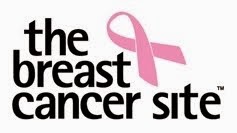by Scrubs • November 7, 2011
What was it like to be a nurse in the Great Depression? There’s plenty of historical information available about what was going on in the industry as a whole…but what most of us really want to know is the answer to questions such as “What was it like to be a nurse back then? What motivated people to choose this profession? What do I have in common with the nurses who came before me?”
Let’s take a look at the big-picture facts and hear some personal anecdotes from nurses who were just graduating from nursing school at the time.
The New Nursing Profession Suffers a Blow
The decade of the Great Depression came at a critical time in the history of nursing. The concept of educating nurses as healthcare professionals had just begun to catch on. Nursing schools with high-quality programs were becoming established. For the first time in U.S. history, being a nurse was seen as a respectable career path for women.
Hazel Joy, RN: “People sort of looked up to nurses. You had to study for three years—intense study, really. I was always proud to be a nurse and I think all of us were at that time.”
On the public health front, malnutrition, overcrowding, poor sanitation and other side effects of extreme poverty caused by the sudden economic decline took an enormous toll on human health. However, the rise in the number of people seeking hospital care didn’t lead to the creation of more nursing jobs. In fact, many hospitals and nursing schools closed due to lack of funding.
Results of Widespread Unemployment
Hospitals instituted entirely new rules for scheduling. Previously, most nurses were expected to work at least 12 hours a day, six or seven days a week (sound familiar?). Now, hours were cut back to eight hours a day, with no more than 48 hours in a week. This policy change allowed more nurses to be employed. General duty staffing became the norm. But some staff did still serve as private duty nurses, caring for just one patient at a time. With funding low, nurses often had to use whatever equipment was available to help patients pull through. Just like today, seeing a patient get well was the best reward.
Ida Carthel, RN: “I did private duty nursing for a two-year-old child, a beautiful little girl from a nearby town. A rattlesnake had bitten her several times on her legs. We had to stay with her because she was delirious. You know how you’ve heard they do these ‘X’ marks to suck the venom out of the patient’s flesh? We used breast pumps for that and it worked. You call that improvising, and we did! She recovered…she was such a doll.”
Low Wages and Restrictive Working Conditions Prevail
The pay wasn’t great (some hospitals had to cut salaries or stop paying altogether for a time), but the work was steady and offered some stability. Of course, just like now, a paycheck was only a temporary incentive. It wasn’t enough to make a person stay in the profession if they weren’t cut out for it.
Hazel Joy, RN: “Yes, it was a job at first, a way to make a living, and then as time went on, you had to like it. And you had to have some input into what was going on, and you had to feel a part of the team in order to get some satisfaction out of the job.”
In a time when few men or women could find a job at all, many young unmarried women still saw going to nursing school as a way out of poverty and insurance for their future. They just had to stay single or they would be kicked out! These thrifty women learned to live on very little as they pursued their dream.
Irma Earngey, RN: “I know that some nurses worked in some hospitals in Fort Worth, [Texas], in the 1930s for room and board and maybe $15 a month. I know that is hard to believe, but remember you could buy a pair of shoes for $2 and you could get a dress for $2 or $3. There wasn’t much money, but it went a long way.”
Nursing Shortages Arise
During the mid-1930s, the situation eased a little. But by this time, the general lack of support for the nursing profession had already created a big problem. There weren’t enough well-trained nurses to go around. This issue took decades (and lots of government educational funding) to fix. Yes, nursing shortages are nothing new. Fortunately, there have always been those who feel the calling to the healing profession too strongly to ignore.
Cleatis Treese, RN: “I think all my life I wanted to be a nurse. Mother said I never had a baby doll that was well. It either had a fracture or something had to be bandaged. So all my life I wanted to be a nurse. There was just never any doubt. Now my father was an invalid and he pushed me too, you know. He thought nurses were just the thing. And then I was a Lutheran, and so my minister just thought he would like to have one of his people go to the Lankenau Hospital [in Pennsylvania] to be a nurse. It just all fit in.”
Quotes derived from The Lived Experience of Registered Nurses, 1930-1950: A Phenomenological Study by Beverly Knowles Byers, BSN, MS, MSN
Friday, November 11, 2011
Subscribe to:
Post Comments (Atom)










No comments:
Post a Comment